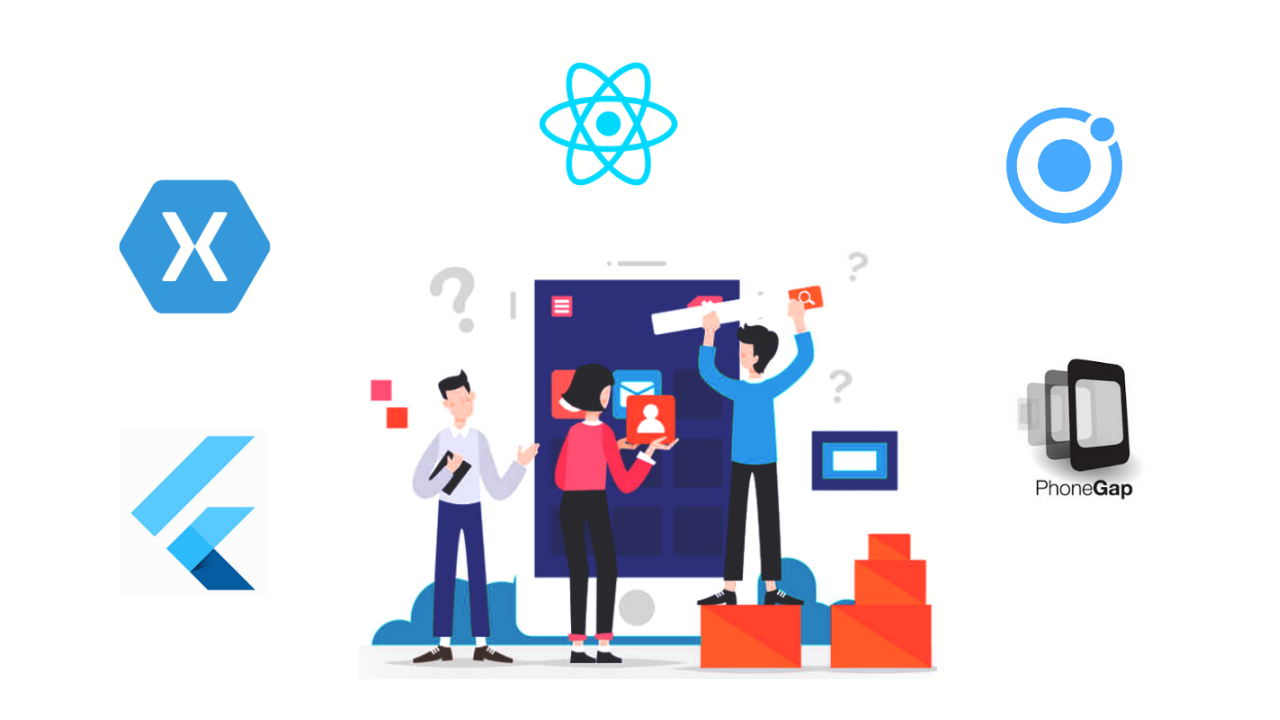Mobile Development 5 May 2023
Choosing the Right Cross-Platform Development Framework: A Comparative Analysis

Cross-platform development frameworks have revolutionized the way mobile applications are built, allowing developers to write code once and deploy it across multiple platforms. Among the top contenders in this space are React Native, Flutter, and Xamarin. In this blog post, we will explore the pros and cons of these frameworks and provide guidance to help you make an informed decision when choosing the right approach for your cross-platform development needs.
Flutter
Flutter, backed by Google, has gained significant momentum in recent years. It uses the Dart programming language and provides a rich set of customizable widgets, allowing you to build visually stunning applications.
Pros:
- Fast development and hot-reloading: Flutter's hot-reloading feature enables rapid development cycles, speeding up the testing and iteration process.
- Native-like performance: Flutter renders its widgets directly to the device's canvas, resulting in smooth animations and high-performance apps.
- Consistent UI across platforms: Flutter's widgets provide a consistent look and feel across different platforms, ensuring a unified user experience.
Cons:
- Smaller community compared to React Native: While Flutter's community is growing rapidly, it may have a smaller pool of resources and community-driven libraries compared to React Native.
- Learning curve: As Flutter uses the Dart programming language, developers may need to invest time in learning a new language and associated concepts.
React Native
React Native, backed by Facebook, has gained immense popularity among developers. It allows you to write code in JavaScript and deploy it on both iOS and Android platforms. Some key advantages of React Native include:
Pros:
- Shared codebase: Develop once and deploy on multiple platforms, reducing development time and effort.
- Native-like performance: React Native bridges the gap between native components and JavaScript, offering excellent performance.
- Vibrant community and ecosystem: A large community of developers contributes to a vast collection of ready-made components and libraries.
Cons:
- Limited native functionality: While React Native covers a wide range of functionality, there may be cases where accessing specific native features requires custom native code integration.
- Reliance on third-party libraries: The need for third-party libraries to access certain features can lead to potential compatibility and maintenance challenges.
Xamarin
Microsoft's Xamarin allows developers to build cross-platform applications using C#. It leverages the .NET framework and offers a robust set of tools and libraries.
Pros:
- Native performance: Xamarin allows direct access to native APIs, resulting in high-performance applications.
- Code sharing and reuse: Xamarin enables sharing a significant portion of code across platforms, maximizing code reuse and reducing development effort.
- Integration with existing codebase: Xamarin seamlessly integrates with existing .NET libraries and offers excellent compatibility with Microsoft development tools.
Cons:
- Slower development cycles: Compared to React Native and Flutter, Xamarin may have slightly longer development cycles due to its more complex setup and debugging processes.
- Platform-specific UI customization: Customizing UI elements to match specific platform guidelines may require additional effort and platform-specific knowledge.
Choosing the Right Approach:
When selecting a cross-platform development framework, consider factors such as project requirements, development team expertise, performance needs, time-to-market, and community support. Assess the trade-offs between development speed, platform access, native performance, and available resources to make an informed decision.
Conclusion:
React Native, Flutter, and Xamarin are powerful cross-platform development frameworks with their own set of advantages and considerations. Understanding the pros and cons of each framework is crucial in selecting the right approach for your project. Consider your specific project requirements, development resources, and long-term goals to determine which framework aligns best with your needs. Embrace the flexibility and power of cross-platform development frameworks to create exceptional mobile applications that reach a wider audience while optimizing development efforts.


